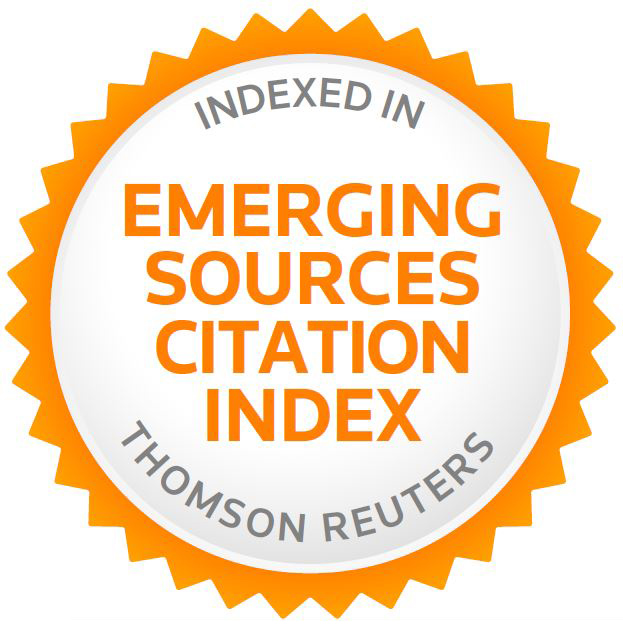Pensiones sociales y pobreza en América Latina
Resumen
Este documento revisa la relación entre las pensiones y la pobreza en la vejez en América Latina luego de la reciente expansión de la cobertura a través de pensiones no contributivas, focalizándose en dieciocho países alrededor del año 2012. A partir de datos administrativos y encuestas de hogares se repasan las estrategias adoptadas y se evalúa la situación actual de los adultos mayores. Los resultados indican que los esquemas elegidos reflejan las distintas realidades. El avance de las pensiones no contributivas está asociado a la reducción de la pobreza en la vejez pero aún quedan brechas por cerrar.Referencias
(2) Alvaredo, F., & Gasparini, L. (2013). Recent Trends in Inequality and Poverty in Developing Countries (Documento de trabajo N° 0151). La Plata: UNLP-Cedlas.
(3) Azevedo, J., Inchauste, G., Olivieri, S., Saavedra, J., & Winkler, H. (2013). Is Labor Income Responsible for Poverty Reduction? A Decomposition Approach (Policy Research Working Paper N° 6414). Washington D. C.: World Bank.
(4) Azevedo, J., Nguyen, M., & Sanfelice, V. (2012a). Adecomp: Stata Module to Estimate Shapley Decomposition by Components of Welfare Measure. Statistical Software Components N° S457562. Boston: Boston College-Department of Economics.
(5) Azevedo, J., Nguyen, M., & Sanfelice, V. (2012b). Shapley Decomposition by Components of a Welfare Aggregate. (Policy Research Working Paper N° 6414). Washington D. C.: World Bank.
(6) Barr, N. (2001). The Welfare State as Piggy Bank. Nueva York: Oxford University Press.
(7) Barr, N., & Diamond, P. (2009). Reforma de las pensiones: principios, errores analíticos y orientaciones políticas. Revista Internacional de Seguridad Social, 62, 5-33. DOI: 10.1111/j.1752-1734.2009.01 327
(8) Barrientos, A. (2009). Social Pensions in Low-income Countries. En Holzmann, R., Robalino, D., & Takayama, N. (eds.). Closing the Coverage Gap: The Role of Social Pensions and Other Retirement Income Transfers. Washington D. C.: World Bank.
(9) Barrientos, A. (2006). Ageing, Poverty and Public Policy in Developing Countries: New Survey Evidence. FISS 13th International Research Seminar on Issues in Social Security Social Protection in an Ageing World, Sigtuna. Institute of Development Studies-University of Sussex.
(10) Barrientos, A. (2002). Old Age, Poverty and Social Investment. Journal of International Development, 14, 1133-1141.
(11) Barrientos, A. (1999a). Economic Risks. The Labour Market, and Older Workers in Latin America (Working Paper Series N° 21). Hatfield: University of Hertfordshire.
(12) Barrientos, A. (1999b). Retirement, Household Income, and Economic Vulnerability of Older Groups. (Working Paper Series N° 20). Hatfield: University of Hertfordshire.
(13) Barrientos, A., Gorman, M., & Heslop, A. (2003). Old Age Poverty in Developing Countries: Contributions and Dependence in Later Life. World Development, 31(3), 555-570.
(14) Barrientos, A., & Mase, J. (2012). Poverty Transitions among Older Households in Brazil and South Africa. European Journal of Development Research, 24, 570-588.
(15) Bertranou, F., Solorio, C., & Van Ginneken, W. (2002). Pensiones no contributivas y asistenciales. Argentina, Brasil, Chile, Costa Rica y Uruguay. Santiago de Chile: ILO.
(16) Bloom, D., & McKinnon, R. (2013). The Design and Implementation of Public Pension Systems in Developing Countries: Issues and Options. (IZA Policy Paper N° 59). Recuperado de http://www.hsph.harvard.edu/programon-the-global-demography-of-aging/WorkingPapers/2013/PGDA_WP_102.pdf
(17) Bosch, M., MELGUIZO, A., & Pages-Cerra, C. (2013). Mejores pensiones, mejores trabajos. Hacia la cobertura universal en América Latina y el Caribe. Washington D. C.: BID.
(18) Castellani, F., & Parent, G. (2011). Being “Middle-class” in Latin America (OECD Development Centre Working Papers N° 305). OECD Development Centre.
(19) Centro Latinoamericano y Caribeño de Demografía (2013). World Population Prospects: The 2013 Revision. Recuperado el 5/2014, de http://esa.un.org/unpd/wpp/Excel-Data/population.htm
(20) CEPAL (2012). Envejecimiento, solidaridad y protección social. La hora de avanzar hacia la igualdad. Tercera Conferencia Anual Intergubernamental sobre Envejecimiento en América Latina y el Caribe, San José de Costa Rica, 8-11 de mayo.
(21) CEPAL (2006). La protección social de cara al futuro: acceso, financiamiento y solidaridad. Informe para el trigésimo primer período de sesiones. Montevideo: Cepal.
(22) Cerutti, P., Fruttero, A., Grosh, M., Kostenbaum, S., Oliveri, M., Rodríguez-Alas, C., & Strokova, V. (2014). Social Assistance and Labor Market Programs in Latin America (Discussion Paper N° 1401). Washington D. C.: World Bank.
(23) Consejo Nacional de Evaluación de la Política de Desarrollo Social (2011). Inventario Coneval de programas y acciones estatales de desarrollo social. Recuperado de http://www.coneval.gob.mx/Evaluacion/IPE/Paginas/default.aspx
(24) Cotlear, D. (2011). Population Aging. Is Latin America Ready? Washington D. C.: World Bank.
(25) Cotlear, D., & Tornarolli, L. (2011). Poverty, the Aging, and the Life Cycle in Latin America. En Cotlear, D. (Ed.), Population Aging. Is Latin America ready? (p. 79-132). Washington D. C.: World Bank.
(26) Deaton, A., & Paxson, C. (1998). Economies of Scale, Household Size, and the Demand for Food. Journal of Political Economy, 106(5), 897-930.
(27) Deaton, A., & Paxson, C. (1997). Poverty among Children and the Elderly in Developing Countries (Center for Research on Child Wellbeing Working Paper #98-09). Nueva Jersey: Princeton University.
(28) Deaton, A., & Zaidi, S. (2002). Guidelines for Constructing Consumption Aggregates for Welfare Analysis (LSMS Working Paper N° 135). Washington D.C.: The World Bank. Recuperado de https://openknowledge.worldbank.org/bitstream/handle/10986/14101/multi0page.pdf?sequence=1&isAllowed=y
(29) De Carvalho, I. (2008). Old-age Benefits and Retirement Decisions of Rural Elderly in Brazil. Journal of Development Economics, 86(1), 129-146.
(30) Del Popolo, F. (2001). Características sociodemográficas y socioeconómicas de las personas de edad en América Latina (Serie Población y Desarrollo N° 19). Santiago de Chile: Celade-División de Población / Cepal.
(31) Ferreira, F., Messina, J., Rigolini, J., López-Calva, L., Lugo, M., & Vakis, R. (2013). Economic Mobility and the Rise of the Latin American Middle Class. Washington D. C.: The World Bank.
(32) Feyrer, J. (2008). Aggregate Evidence on the Link between Age Structure and Productivity. Population and Development Review, 34, 78-99.
(33) García, M., & Moore, C. (2012). The Cash Dividend: The Rise of Cash Transfer Programs in Sub-Saharan Africa. Washington D.C.: The World Bank. Recuperado de https://openknowledge.worldbank.org/handle/10986/2246
(34) Gasparini, L., Alejo, J., Haimovich, F., Olivieri, S., & Tornarolli, L. (2007). Poverty Among Older People in Latin America and the Caribbean. Journal of International Development, 22, 176-207.
(35) Gasparini, L., Cicowiez, M., & Sosa, W. (2013). Pobreza y desigualdad en América Latina. Conceptos, herramientas y aplicaciones. Buenos Aires: Editorial Temas.
(36) Gasparini, L., Marchionni, M., Olivieri, S., & Sosa, W. (2013). Multidimensional Poverty in Latin America and the Caribbean: New Evidence from the Gallup World Poll. The Journal of Economic Inequality, 11(2), 195-214. Recuperado de http://link.springer.com/article/10.1007%2Fs10888-011-9206-z
(37) Gorman, M., & Heslop, A. (2002). Poverty, Policy, Reciprocity and Older People in the South. Journal of International Development, 14, 1143-1151.
(38) Grosh, M., Del Ninno, C., Tesliuc, E., & Ouerghi, A. (2008). For Protection and Promotion: The Design and Implementation of Effective Safety Net Programs. Washington D. C.: World Bank.
(39) Hanlon, J., Barrientos, A. & Hulme, D. (2010). Just Give Money to the Poor: The Development Revolution from the Global South. Sterling: VA Kumarian Press.
(40) Holzmann, R., & Hinz, R. (2005). Old Age Income Support in the 21st Century: An International Perspective on Pension Systems and Reform. Washington D. C.: World Bank.
(41) Holzmann, R., Robalino, D., & Takayama, N. (Eds.) (2009). Closing the Coverage Gap: Role of Social Pensions and Other Retirement Income Transfer. Washington D. C.: World Bank.
(42) Huenchuan, S., & Guzmán, J. (2006). Seguridad económica y pobreza en la vejez: tensiones, expresiones y desafíos para políticas. Reunión de Expertos sobre Población y Pobreza en América Latina y el Caribe, Santiago de Chile, 14 y 15 de noviembre, Celade.
(43) International Labor Organization (2011). World Social Security Report 2010/2011. Providing Coverage in Times of Crisis and Beyond. Ginebra: ILO.
(44) Inchauste, G., Azevedo, J., Essama-Nssah, B., Olivieri, S., & Van Nguyen, T., Saavedra-Chanduvi, J., & Winkler, H. (2014). Understanding Changes in Poverty. Washington D.C.: The World Bank Group. Recuperado de https://openknowledge.worldbank.org/handle/10986/19445
(45) Inchauste, G., Olivieri, S., Saavedra, J., & Winkler, H. (2012). What is Behind the Decline in Poverty? Evidence from Bangladesh, Peru and Thailand (World Bank Policy Research Working Paper No. 6199) Washington D. C.: World Bank.
(46) Kakwani, N., & Silber, J. (2008). Quantitative Approaches to Multidimensional Poverty Measurement. Nueva York: Palgrave Macmillan.
(47) Kakwani, N. & Subbarao, K. (2005). Ageing and Poverty in Africa and the Role of Social Pensions. Washington D.C.: The World Bank.
(48) Kidd, S., & Whitehouse, E. (2009). Pensions and Old Age Poverty. En Holzmann, R., Robalino, D., & Takayama, N. (Eds.), Closing the Coverage Gap: The Role of Social Pensions and Other Retirement Income Transfers. Washington D. C.: World Bank.
(49) Lanjow, P., Milanovic, B., & Paternoso, S. (1998). Poverty and the Economic Transition: How do Changes in Economies of Scale Affect Poverty Rates for Different Households? (Policy Research Working Papers N° 2009). Washington D. C.: The World Bank.
(50) Levy, S., & Schady, N. (2013). Latin America’s Social Policy Challenge: Education, Social Insurance, Redistribution. Journal of Economic Perspectives, 27(2), 193-218.
(51) Lloyd-Sherlock, P. (2001). Living Arrangements of Older Persons and Poverty in the Developing World. Review of Income and Wealth, 37, 345-361.
(52) Lloyd-Sherlock, P. (2000). Old Age and Poverty in Developing Countries: New Policy Challenges. World Development, 28(12), 2157-2168.
(53) Malmberg, B., Lindh, T., & Halvarsson, M. (2008). Productivity Consequences of Workforce Aging: Stagnation or Horndal Effect? Population and Development Review, 34, 238-256.
(54) Murrugarra, E. (2011). Employability and Productivity among older Workers: A Policy Framework and Evidence from Latin America (SP Discussion Paper N° 1113). Washington D. C.: World Bank.
(55) OECD (2008). Growing Unequal? Income Distribution and Poverty in OECD Countries. París: OECD.
(56) Palacios, R., & Slunchynsky, O. (2006). Social Pensions Part I: Their Role in the Overall Pension System (SP Discussion Paper N° 0601). Washington D. C.: World Bank.
(57) Perry, G., Maloney, W., Arias, O., Fajnzylber, P., Mason, A., & Saavedra-Chanduvi, J. (2007). Informality: Exit and Exclusion. Washington D. C.: World Bank.
(58) Prskawetz, A., Fent, T., & Guest, R. (2008). Workforce Aging and Labor Productivity: The Role of Supply and Demand for Labor in the G7 Countries. Population and Development Review, 34, 298-323.
(59) Rofman, R., Apella, I., & Vezza, E. (2013). Más allá de las pensiones contributivas: catorce experiencias en América Latina. Washington D. C.: World Bank.
(60) Rofman, R., & Oliveri, M. (2012). Pension Coverage in Latin America: Trends and Determinants (Social Protection & Labor Discussion Paper N° 1217). Washington D. C.: World Bank.
(61) United Nations Population Fund & HELPAGE (2012). Ageing in the Twenty-first Century: A Celebration and a Challenge. Londres: Unfpa / HelpAge.
(62) Whitehouse, E. (2000). How Poor are the Old? A Survey of Evidence from 44 Countries (SP Discussion Paper N° SP 0017). Washington D. C.: World Bank. Recuperado de http://documents.worldbank.org/curated/en/2000/06/1620947/poor-old-survey-evidence-44-countries
(63) Zaidi, A. (2009). Poverty and Income of Older People in OECD Countries. Viena: European Centre for Social Welfare Policy and Research-United Nations.
Apuntes, revista de Ciencia Sociales publica todos sus artículos y reseñas bajo la licencia Creative Commons Attribution (CC BY 4.0) con el objetivo de fomentar el intercambio académico a nivel mundial. Por ello, la obra en cuestión puede ser distribuida, remezclada, retocada, etc., como el autor y los lectores de la misma lo estimen conveniente. La única condición es que se cite a la revista Apuntes, revista de Ciencias Sociales como entidad editora del texto.








.jpg)



